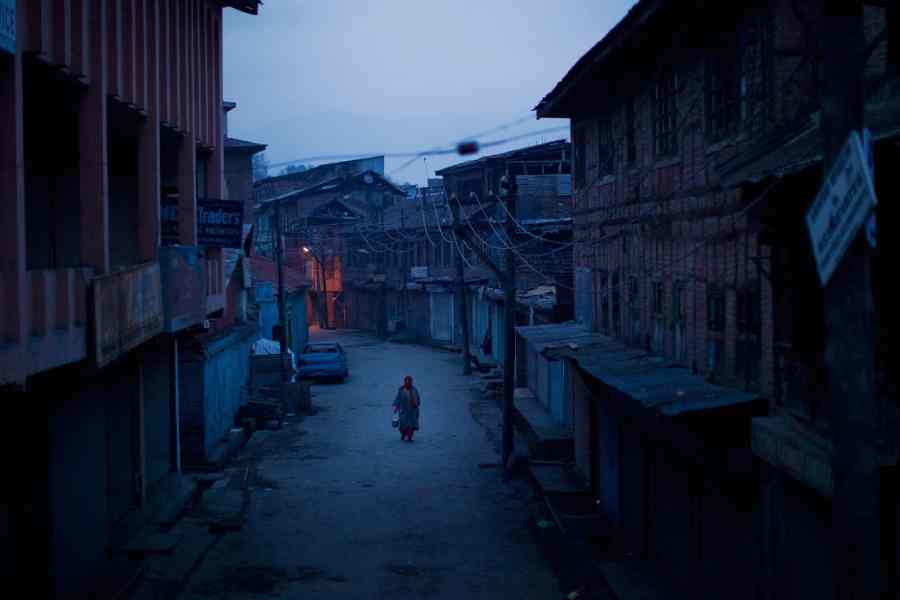THE COMPANY OF VIOLENT MEN: STORIES FROM THE BLOODY FAULT LINES OF THE SUBCONTINENT
By Siddharthya Roy
Ebury, Rs 599
At the time of writing this review, two major controversies have grabbed the attention of India and its neighbours. First, an uprising by student groups compelled Sheikh Hasina Wazed to flee Bangladesh. Second, the alleged rape of a doctor at Calcutta’s R.G. Kar Medical College and Hospital sparked nationwide outrage in India.
While the incidents themselves continue to produce shock waves, the coverage of their aftermath raises a more pressing question: what is the actual sequence of events that need to be linked together to unveil the truth? So far, we have versions of the truth — or perhaps opinions — with each political commentator taking a side based on his/her interpretation of sources, historical context, political affiliations, and common sense.
In The Company of Violent Men, Siddharthya Roy investigates the concept of objective truth — an unadulterated truth uncoloured by personal beliefs or ideologies — in a world steeped in ascendant right-wing propaganda. “In any conflict, truth is the first victim,” notes Roy. “[U]nadulterated truth is rare in the shadowy and deceptive world of intelligence and counterintelligence.” This search, philosophical in its pursuit and rigorous in its tenor, takes him to multiple red-taped areas to understand the various vectors that shape their bloodied realities.
From drug mafias dealing in Yaba crossing the Bangladesh-Myanmar border across the Naf river to Rohingya women impersonating Bangladeshis in brothels to a chance encounter with Syed Ali Shah Geelani’s bodyguard, the book casts its net far and wide. Behind-the-scene events integral to political journalism shine through; beginning with childlike inquisitiveness, followed by the formulation of hypotheses aided by research, pitching for fellowships and sifting through sources, translators, and fixersbefore actually starting on-site reporting. Take, for example, the reporting on the insurgence of the Islamic State in Germany under the guise of refugees who might function as an “alternative to Osama’s lot and the Afghan Taliban.” It is an intriguing premise; Roy even gets a fellowship to report but all the sources he sets out to interview turn a cold shoulder as soon as he lands in Berlin.
The parts where the book shines the most concern the trials and the tribulations of political reporting, which, at times, are juxtaposed with the plushness of the arts and culture journalism pursued by Roy’s former wife. The dearth of funds or the revocation of fellowships owing to ideological differences reveals the associated challenges. A persistent Roy goes to Bangladesh to report on the Holey Artisan Bakery case with his own dwindling funds. The difficulty of finding sources is further confounded by ones revealing partial truths or fabricating stories to suit their personal agendas. His exchanges with two seasoned liars,an Iraqi man named Junaid Alawash, and Zakir Kibira, who impersonates a former World Bank consultant, both of whom make tall claims but begin to falter soon, are delightful.
The formidable problem of a witness turning hostile is laid bare during the reporting of the State dropping bombs in Red zones. Roy travels to the thickets of Odisha and Jharkhand to meet villagers who confirm the bombing and even give him the dimensions of the craters left by the bombs. Roy tries to double-check the claim by visiting the site but encounters resistance. Even interviews with Maoist chiefssuch as Madvi Hidma become difficult to come by.
The chapters, however, lack a sturdy structure for the most part. For a book that deals with the nuances of political developments in diverse regions, it would have been better for Roy to delve deeply into each issue so as to be informative for an uninitiated reader. Multiple conversations take place, especially with respondents in the case of the Kashmir separatist movement, but they don’t provide the necessary context to readers.
The last chapter dealing with personal aftermath makes a reader’s heart lurch. Roy — he seems to be immune to death threats — receives a series of terrifying messages after reporting on Kashmir. More than for himself, he becomes worried for his family. He has to contact the police; they assume a Pakistani connection and station constables around his house. Strangely,even at such a vulnerable moment, Roy’s immediate family seems miffed with him.
At a time when journalism is dealing with censorship and inimical market forces, Roy’s book asks us to ponder the meaning of truth and the price one pays for its excavation.











